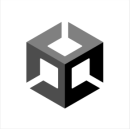No tech company would develop a product without a well-designed operational framework: one that assigns specific roles and responsibilities to team members along with clear goals, objectives and processes for measuring progress. Likewise, a new service launched without executive support is doomed to fail as those with the power to marshall resources and support instead sit on the sidelines. Finally, how could a project of any size succeed without appropriate funding?
Now replace “product” with “employee resource group.”
ERGs may begin as organic initiatives, but like a new product, they cannot succeed without thoughtful planning, support from the broader team and executives, and funding. Success in this context is providing a space for employees from underrepresented backgrounds in tech to find community, share knowledge and resources, and advocate for change. Strong ERGs are a tangible representation of a company’s commitment to DEI and a way of showing that inclusivity is more than just a word on a wall or an “about” page.
Whether you’re thinking about launching an ERG or are just curious about best practices, continue reading to find top tips from DEI professionals at Austin tech companies.
Q2 is a fintech company that provides digital banking, lending and security solutions to banks, credit unions and fintech companies. Mikal Anderson, senior diversity and inclusion strategist, told Built In Austin that when it comes to the mistakes companies make when implementing ERGs, the biggest one is moving too quickly. Anderson outlined his more methodical and intentional approach to Built In along with what it requires for success.
What is required to make an ERG program successful?
A clear operational framework that supports the program. It’s so important to define the roles and structures, establish clear goals and objectives, and define processes for measuring success and progress. Otherwise, the program lacks real impact and results.
This also requires committed leadership, which includes both volunteer and executive sponsorship. There need to be adequate resources and lots of educational opportunities for employees to engage in. The mission should showcase a clear focus on inclusion and belonging, building communities within the organization and outside, and a focus on organizational learning around cultures and the experiences of diverse people.
Define the roles and structures, establish clear goals and objectives, and define processes for measuring success and progress. Otherwise, the program lacks real impact and results.”
What are some common mistakes companies make when implementing ERGs?
The biggest common mistake is rushing. There is a tendency to go fast instead of focusing on getting things right. The most common outcome when organizations rush building ERG programs is that the program does not fully connect and integrate into the business strategy and function. It lacks key results and is disconnected from key company priorities and objectives.
Another common mistake companies make when implementing ERG programs is simply not leveraging diversity as an asset. They don’t amplify or leverage the voices of underrepresented individuals and their diverse communities. Successful ERG programs must lean into distributed models with leadership frameworks. If you don’t lean into that, it becomes performative and lacks impact. Responsibility for ERG success should also be authentically shared, carried and valued by executive leadership and messaged out to the company as a whole.
How is your team celebrating Hispanic Heritage Month this year?
During the months of September and October, Q2 will be holding lunch and learn meetings for employees to learn more about Hispanic Heritage month and its connections to our local region. Our employees will also be educated regarding why this celebration starts in the middle of the month and hear more about cultural diversity within the Latinx community. Q2 is also hosting a Hispanic Heritage networking event to include our communities outside the company as well.

Rapid7 is a cybersecurity company offering a complete suite of solutions for security testing, automated incident response, cloud security and more. Sophia Dozier recently joined the company as director of diversity, equity and inclusion and said she’s already been able to help bring structure to Rapid7’s ERGs, or “Rapid Impact Groups,” and help three more get off the ground since starting.
That said, the groundwork for this success was laid before Dozier’s arrival, and she told Built In Austin how the company’s culture lends itself to the organic formation and how support from the business ensures these grassroots ERGs survive and thrive.
What is required to make an ERG program successful?
Don’t force the parameters of establishing community. Build programs with those they are meant to benefit and support, start slow and create a shared outcome for all groups. Over the years, we have had several ERGs, or “Rapid Impact Groups,” organically sprout, and a key reason why is our corporate culture. One of our core values is “bring you,” and within that value it is clear that individual and community expression are supported and protected. When you have that key concept rooted into how you think and operate as a company, an outcome is organic community.
Within the past few months, with the hiring of myself, the director of DEI, we have made some great strides in creating a very loose structure for the established groups, and through some critical conversations we have been able to establish three more groups. The job of the business is to provide the support needed for individuals to come together. We offer guidance on areas of impact, but we do not dictate the projects or areas of focus. All we ask is that our groups are action-oriented and help in the elevation of the community.
Placing the burden on ERGs to drive your DEI strategy is not ethical. Fund and support your ERGs to focus on the programs they believe will help them and help influence the company.”
What are some common mistakes companies make when implementing ERGs?
It is really easy to look at other companies and try to quickly establish what you see in that environment within your own company. You cannot force the speed at which a community develops. Lift and shift models, specifically within DEI, can be very detrimental and harmful. Every company is different. Leveraging best practices you see in other spaces and then thoughtfully crafting a model that works for your company leads to more impactful, long-term outcomes.
Those in the DEI space need to do a better job of communicating expectations and timelines. Progress doesn’t happen overnight, and patience is very important. Finally, placing the burden on ERGs to drive your DEI strategy is not ethical. Fund and support your ERGs to focus on the programs they believe will help them and help influence the company. Your DEI strategy should not have a single point of failure. It should be part of the larger company ecosystem and the operational DNA of your business.
How is your team celebrating Hispanic Heritage Month this year?
A group of individuals from across the business have formed a very engaging plan for the month. Aligning to the national theme of “Unidos: Inclusivity for a Stronger Nation,” our Rapid Impact Group has developed this mission for the month: “In commemoration of National Hispanic Heritage Month, we invite all of Rapid7 to engage in the elevation of the Hispanic American and Latinx community and think critically about the lived experience. Throughout the month, we will highlight important figures, first-person experiences, the arts, events and the struggle for equity.”
Each week we will be sharing a curated content guide full of Hispanic leaders, authors, speeches and thought-provoking articles for our entire Rapid7 community to dig into. We will be holding companywide discussion groups, a peer-to-peer career panel moderated by one of our SVPs, a movie night featuring a Hispanic Director and a happy hour catered by locally owned Hispanic business owners. None of the plan was dictated by the business, but it is entirely supported by the business.
Game developers, artists and automotive designers are a few of the people who use Unity’s real-time 3D development platform. While Unity’s main focus as a business is enabling creators to bring their visions to life in three dimensions, it also puts an emphasis on creating spaces for its employees to connect over their shared identities.
James Turnage-Lannan is the senior program manager of inclusive economic opportunity and has been with the company for more than five years. He shared his tips for building a strong and sustainable ERG and shed light on how the Unity team is celebrating Hispanic Heritage month.
What is required to make an ERG program successful?
To have a successful ERG, you need a strong ERG leadership team dedicated to building a safe and thriving community within the workplace. Without this, it will be difficult to inspire your community to engage with one another or participate in ERG-related events and activities. Building strong ERG leadership also means that leads can rely and lean on each other. At most companies, an ERG lead is usually a voluntary role, so it’s essential to have other leads to lean on in case someone needs time away to handle the duties of their day job.
Other things required for success are the support and resources needed to build a thriving community. Equipping an ERG with a reasonable budget, executive sponsors who carry the voice of an ERG to the executive team and support from a dedicated DEI team are great ways to ensure an ERG is built to succeed.
Equipping an ERG with a reasonable budget, executive sponsors who carry the voice of an ERG to the executive team and support from a dedicated DEI team are great ways to ensure an ERG is built to succeed.”
What are some common mistakes companies make when implementing ERGs?
It’s very easy and convenient for a company to implement ERGs because they expect the people within these communities to do the leg work in creating an inclusive and safe space for their members. Creating a welcoming and safe environment requires effort from the entire company, not just a group of people. ERGs can bring awareness and education about a culture to those who might not know about it, so it’s important to have people outside of these communities get involved, especially those in higher positions who can inspire or influence others to do the same.
How is your team celebrating Hispanic Heritage Month this year?
Our Latinx ERG, ComUnidad, is celebrating Hispanic Heritage Month with several events focused around the theme “generational roots.” We want to highlight each of our generational roots in various ways to allow us to appreciate the history of our heritage. We will be hosting events centered around food, dance and history and will wrap it all up by giving back to our community through group volunteering. We’re super excited to give our ERG members the opportunity to celebrate their heritage with us as a community!










